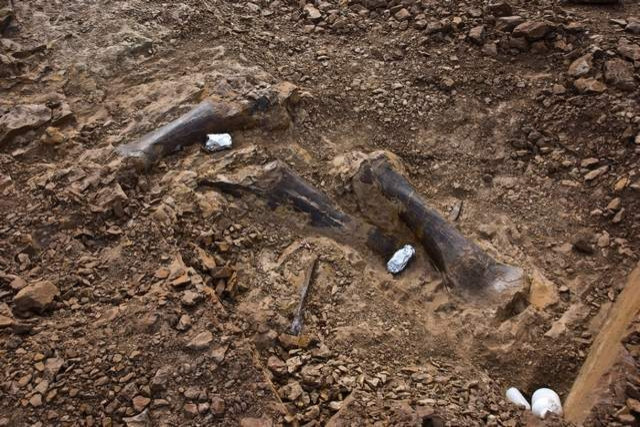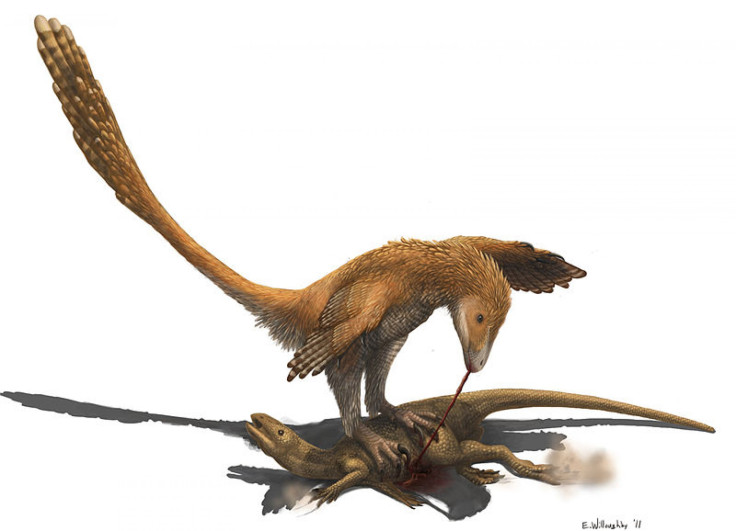Triceratops Trio Discovery Highlights Rich Dinosaur History Of U.S. Great Plains [PHOTOS]
The U.S. Great Plains: Where, a few hundred years ago, the buffalo roamed -- and where, hundreds of millions of years ago, the dinosaurs roamed.

One of the most recent finds is a trio of Triceratops unearthed in Wyoming. The group contains one of the most complete skeletons of the famous dinosaur ever discovered, and could possibly be a mated pair and their baby. The bones tell the story of a messy end for the trio – the biggest Triceratops bears bite marks that seem to come from a Tyrannosaurus rex.
"If you can imagine, this is a bone that is nearly four feet long," Peter Larson, president of the Black Hills Institute of Geological Research, told CNN. A Tyrannosaurus "would kind of chop the carcass up with their giant, shearing jaws," easily butchering both flesh and bone.
"I think we also have a feeding site for Tyrannosaurus rex, which is very exciting," Larson told CNN. "This is potentially a site where we can learn the behavior of two different species."
The Great Plains of the U.S. used to be home to a large sea that split North America in two. These seabeds provided an ideal environment for preserving fossils of the creatures that once walked, swam, or flew through the area. If you’re looking for a big cache of fossils, your best bet would to head north from Wyoming. Neighboring Montana is a treasure trove of dinosaur fossils, producing more finds than any other U.S. state.
The club-tailed Ankylosaurus, Triceratops, the long-necked Apatosaurus and even Tyrannosaurus rex – they all once called ancient Montana home. In fact, one of the first official pieces of evidence of T. rex was found in Montana in 1902, by excavators working for the American Museum of Natural History in New York. (However, the first actual T. rex fossil was found in Wyoming in 1900, and named Dynamosaurus imperiosus by its discoverers. Both finds were described in a 1905 paper, but because Tyrannosaurus appeared one page before Dynamosaurus, we stuck with the former.)
The Velociraptor hails from Mongolia, but the popular perception of raptors, as seen in "Jurassic Park," is modeled after a Montana-dwelling predator called Deinonychus. In reality, the Velociraptor was much smaller than most people realize, and would come up to an average human’s mid-thigh. Deinonychus, on the other hand, could grow up to 11 feet long and weighed up to 160 pounds.

And yes, it had some wickedly cruel claws:
Other dinosaurs that once roamed Montana include the diminuitive Bambiraptor, which was about two feet long. Some paleontologists speculate that Bambiraptor might have had opposable fingers that would make it easier to transfer food from its “hands” to its mouth.
© Copyright IBTimes 2024. All rights reserved.





















